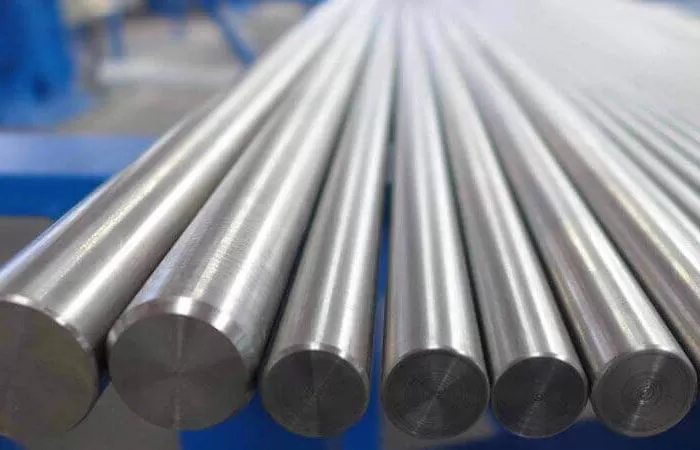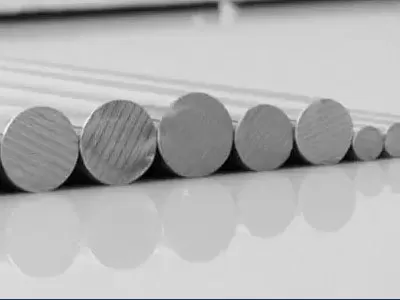
In 2019, a commercial aircraft over the Mediterranean experienced an abrupt temperature surge in one of its turbine engines. The pilot engaged emergency shutdown. Mechanics later found that the engine’s secondary casing had reached over 1000 °C—well past the tolerance of most alloys. And yet, the core shaft, pins, and rod supports were intact. Their secret? They were forged from Inconel 600.
While few materials can laugh in the face of molten gas, Inconel 600 rods—crafted from a unique nickel-chromium-iron blend—are built to thrive under punishing thermal, chemical, and mechanical stress. Whether in turbine engines, power plants, or chemical reactors, this superalloy silently holds its ground where most others falter.
Inconel 600 was born during the atomic age, originally developed for nuclear steam generator tubing. Its creators needed a metal immune to both corrosive coolants and high thermal gradients. The result was a nickel-heavy alloy (72–76% Ni) enriched with chromium (~15%) for oxidation resistance and iron for added strength.
This composition yielded three critical properties:
High-temperature strength
Exceptional resistance to chloride-induced stress cracking
Oxidation resistance beyond 1000 °C
In short: a rod-shaped miracle.
Unlike most stainless steels, Inconel 600 doesn’t just survive under high heat—it remains structurally reliable. The key is its solid-solution strengthening and chromium-enriched oxide layer.
Studies from aerospace labs show:
After 100 thermal cycles between 400–1100 °C, Inconel 600 rods retained over 92% of their tensile strength.
Surface oxidation was minimal even in oxygen-rich atmospheres—less than 0.1 mm oxide depth after 500 hours at 1050 °C.
Creep rupture testing at 900 °C showed a life expectancy of 1,400 hours under 45 MPa—nearly double that of 316 stainless steel.
It doesn’t deform. It doesn’t crack. It endures.
A natural gas plant in the UAE faced catastrophic equipment corrosion due to salt-laden air and desert heat. Heat exchangers and turbine linkage rods, originally made from 321 stainless steel, were replaced every 14 months on average due to surface scaling and embrittlement.
In 2014, the operators made a costly—but calculated—decision: they switched to Inconel 600 rods. They designed bushings, support braces, and guide rails from 32 mm rod stock.
Results after 7 years:
Zero component failure
Maintenance cycles extended from 14 months to over 5 years
Net cost savings of $480,000 per unit over a decade
Their chief engineer described it best:
“The rods outlasted the pumps. They didn’t just survive the environment—they mastered it.”
While robust in service, Inconel 600 can be challenging in fabrication. It work-hardens rapidly. But those in the know apply these principles:
Machining Tips:
Use carbide tools, flood coolant, and shallow cuts. Speeds around 30–50 m/min with low feed rates yield best results.
Welding Advice:
GTAW (TIG) welding with ERNiCr-3 filler ensures metallurgical match. Avoid contamination with sulfur or lead-containing fluxes.
Heat Treatment:
Solution annealing at 1100–1150 °C followed by rapid cooling prevents grain boundary carbide formation and restores ductility after cold work.
Surface Finish:
Mirror finishing (Ra < 0.5 µm) dramatically improves corrosion resistance, especially in turbine gas flow paths.
Let’s break it down with a side-by-side comparison:
|
Property |
Inconel 600 |
316 Stainless Steel |
Incoloy 800 |
|
Max. Working Temp (°C) |
1150 |
870 |
980 |
|
Creep Resistance |
Excellent |
Moderate |
Good |
|
Chloride Stress Cracks |
Resistant |
Susceptible |
Moderate |
|
Thermal Cycling |
Very Stable |
Poor |
Fair |
In stress-simulation testing (ASTM G36), Inconel 600 withstood 500 cycles from 200–1050 °C with <0.5% deformation. Stainless steels showed microcracking after 120 cycles.
Upfront, Inconel 600 rod stock costs 3–4× more than 316L. But total lifecycle cost tells a different story.
A 2021 energy system analysis revealed:
Initial cost per rod unit: $400 (316L) vs $1,400 (Inconel 600)
Replacement frequency (10 years): 4× (316L) vs 1× (Inconel 600)
Downtime savings: ~$35,000 per failure event avoided
Total 10-year cost:
316L: $5,200
Inconel 600: $1,900
In simple terms: pay more once, save more forever.
Looking ahead, Inconel 600 rods are being adapted into:
AI-managed gas turbines where real-time sensors need stable hardware interfaces.
Modular nuclear SMRs (Small Modular Reactors) using Inconel rods as core support guides.
Solar thermal towers operating at 1100+ °C, using alloy rods for heliostat support shafts.
Desalination units with extreme brine concentrations.
With aerospace, green energy, and water scarcity intersecting, the demand for reliable, heat-resistant rods is only growing.
From the bowels of a flaming turbine to the sterile guts of a desalination tower, Inconel 600 rods deliver strength under fire—literally. They don’t just meet spec—they safeguard systems, timelines, and budgets under the most punishing conditions.
In a world where extremes are becoming the new normal, materials like Inconel 600 offer more than performance—they offer resilience by design. And sometimes, that’s the only thing between failure and flight.

2025-11-19 14:09:22

2025-11-07 17:27:49

2025-11-05 15:44:44

25th floor, C3 Building, Wanda Plaza, Kaifu District, Changsha, Hunan Province, China